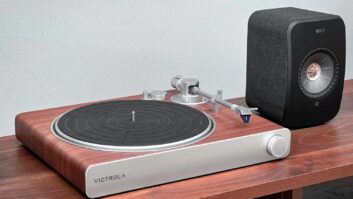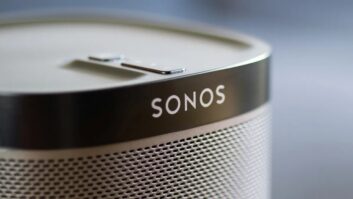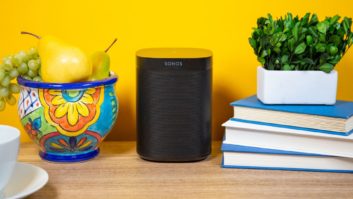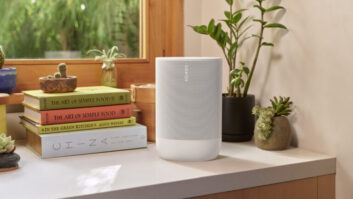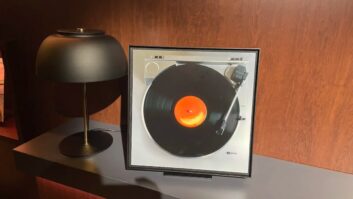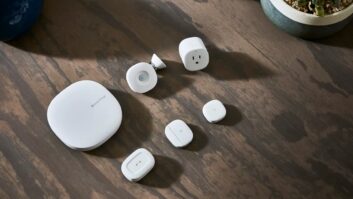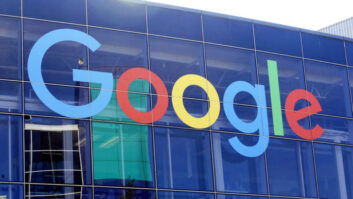New ads, debuting at Grammy Awards, encourage reconnecting via shared music
Sonos launched its 2017 ad campaign during the 2017 Grammy Awards ceremony with a 60-second TV spot calling on people “to reconnect at home through a shared music experience,” Sonos CMO Joy Howard told TWICE.
The ad, inspired by Billy Joel’s “Glass Houses” album cover from 1980, shows someone hurling a Sonos speaker through the window of a house full of people engaged in solitary activities, many of them staring silently at their smartphone screens. After the speaker smashes through the window, the words “Wake up the silent home” appear on screen. The ad also positions Sonos as “the home sound system.”
Sonos chose the Grammys for the ad’s debut because the ceremony is a shared music-oriented event, Howard explained. The ad will appear globally in “high-impact places around shared events like the Grammys” as well as in cinemas, she added. Longer and shorter versions will appear in digital ads and social media.
Shared music “helps people connect with one another,” and “the absence of music exacerbates the stresses of modern life,” Howard said of the commercial. “Even together we’re all alone.”
A survey of 9,000 people in nine countries shows that two-thirds are “stuck in a silent home” and are living “under one roof but not together,” added Dr. Daniel Levitin, a neuroscientist and author who devised the survey. In the past, he noted, people played musical instruments together at home. Now, however, people “have retreated into a world of our own screens,” and they’re “listening to music in isolation through ear buds,” he said during a presentation at Sonos offices in Boston.
The study’s results show that music listening has been pushed aside in many homes because of “acute hyper scheduling,” and for the music listening that is done, much of it is done in isolation, Levitin said.
Among the findings:
• 60% of adults said they listen to less music than when they were younger.
• 44% said “a lot of their at-home listening takes place either alone or via headphones.”
• 86% acknowledged that “shared moments are enhanced by the right music.”
• 62% said more of their social interactions take place through digital media.
• 46% said family members spend more time interacting with technology than directly with one another.
The results underscore that “our mission is more vital than it has ever been,” Howard said.
To pursue its mission, Sonos during 2017 will continue to implement a “broadbased” ad campaign that includes digital ads, social-media ads, search ads, cinema spots, TV spots, outdoor advertising, and print, the latter because many potential customers still like to listen to music while leafing through magazines, Howard said. Sonos will continue this year to shift its advertising dollars more toward digital media, and TV will be used “in a considered and concentrated way,” she said without stating whether the ad budget is getting a boost in 2017.
In 2014, Sonos ran a TV ad during the Super Bowl, but Howard, who became CMO 18 months ago, noted that the event creates “a lot of noise.”
This year’s ad-campaign message will differ from last year’s theme, which focused on waking up people to “the absurdities of modern listening,” such as listening through ear buds, placing phones in mugs to boost bass response, and using “jerry-rigged” and “complicated solutions” that many people stopped using over time, Howard said. Complicated solutions include component systems that trap music to one room and Bluetooth solutions that compromise performance for convenience and are subject to dropouts and failed connections, the company said.
“Technology is not always a solution. Sometimes it’s part of the problem,” Howard contended.
During another presentation at the Sonos offices, newly appointed CEO Patrick Spence called the company “profitable” and said Sonos enjoyed double-digit growth in the fourth quarter. Thirty percent of company revenues come from repeat sales in which consumers buy their second and third Sonos products for additional rooms, he said.
Separately, Antoine Leblond, Sonos’s software VP, said Sonos continues to plan a general software update “later this year” to enable voice control of Sonos systems through a networked Amazon Echo or Dot wireless speaker. Sonos, however, will also embrace “multiple voice assistants,” he said. Sonos will not launch its own voice-control technology.
Voice-control capability built directly into Sonos products is “inevitable,” Leblond added, but he declined to say when that would happen.
“We’re still in the really, really early days of voice in the home,” said Leblond, who demonstrated a beta version of voice control through an Amazon Tap.




